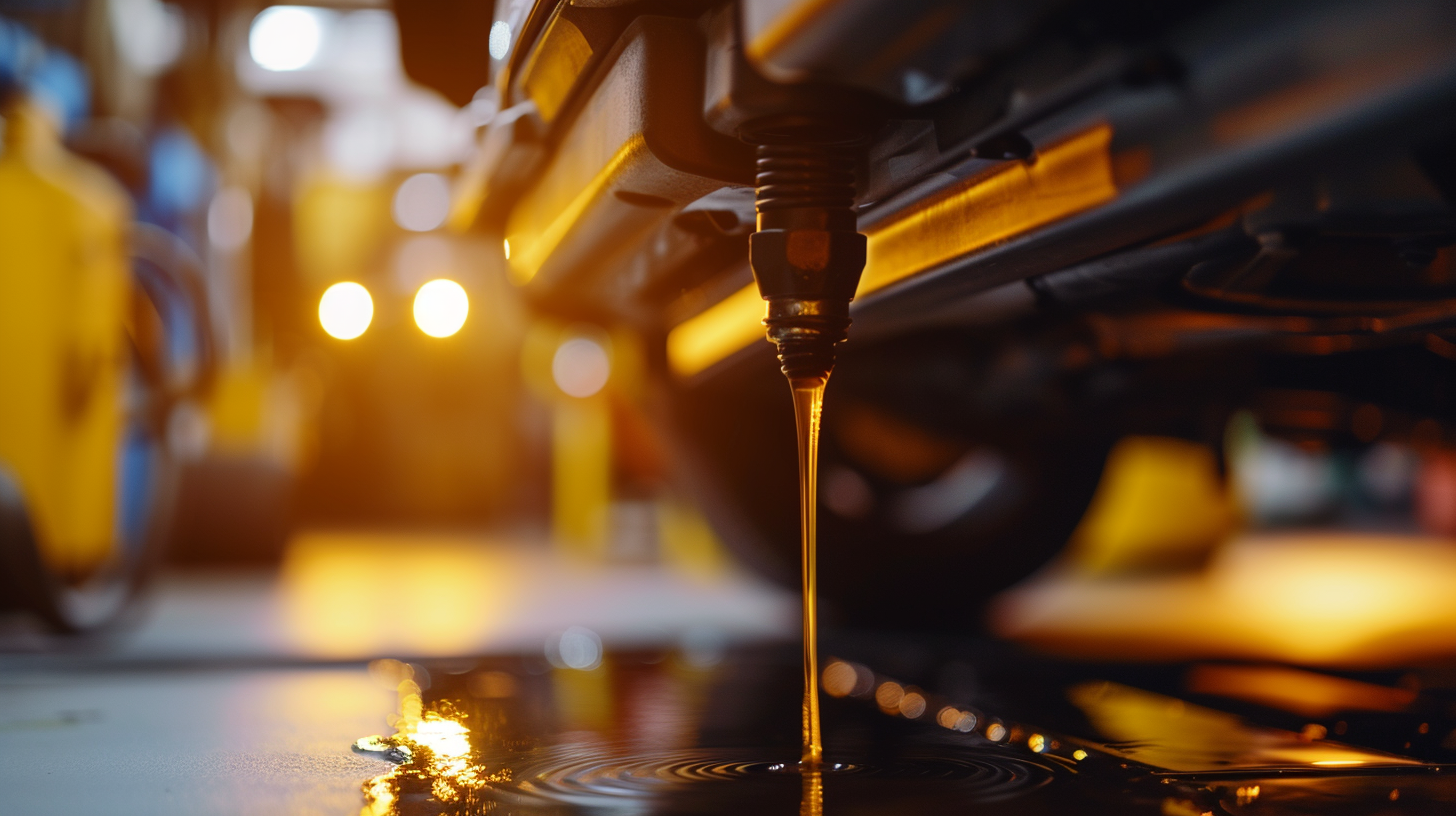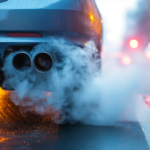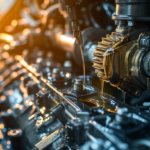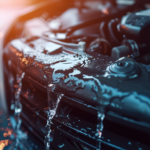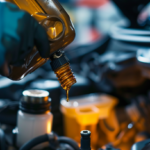Do you suspect that your car’s brake fluid is leaking? Don’t worry, detecting and fixing brake fluid leaks is easier than you think. In this article, we will guide you through the process of identifying the signs, inspecting your brake system, and identifying the source of the leak. We will also provide you with DIY methods to repair the leaks and prevent future issues. Get ready to keep your brakes in top shape and ensure your safety on the road.
Signs and Symptoms of Brake Fluid Leaks
You may experience one or more signs and symptoms of brake fluid leaks in your car. One of the most common signs is a soft or spongy brake pedal. When you press down on the brake pedal, it may feel less responsive or require more pressure than usual. Another sign is a low brake fluid level. If you notice that the brake fluid reservoir is consistently low or empty, it could indicate a leak. Additionally, you may notice a sweet or burnt smell coming from your brakes. This smell is often a result of the brake fluid leaking onto hot brake components. Finally, if you see any visible signs of fluid underneath your car, such as puddles or wet spots near the wheels, it is a clear indication of a brake fluid leak.
Inspecting Your Brake System for Leaks
Fortunately, you can easily inspect your brake system for leaks by following these simple steps. First, park your car on a level surface and engage the parking brake. Start by visually inspecting the brake lines and connections for any signs of fluid leaks. Look for wet spots or stains around the brake hoses, calipers, and wheel cylinders. If you notice any leaks, it is important to address them promptly. Next, check the brake fluid reservoir located under the hood. Ensure that the fluid level is between the minimum and maximum marks. If it’s below the minimum mark, it may indicate a leak in the system. Additionally, examine the brake pads and rotors for any excessive wear or damage. By regularly inspecting your brake system, you can catch leaks early and prevent potential brake failures.
Identifying the Source of the Leak
Now it’s time to identify where the brake fluid leak is coming from. Start by visually inspecting the brake system for any signs of leaks, such as wet spots or puddles. Pay attention to any changes in the color of the brake fluid, as this could indicate a leak. Finally, you can test the fluid for contamination using a test strip to further pinpoint the source of the leak.
Visual Inspections for Leaks
Inspect the vehicle for any visible signs of brake fluid leaks. Start by checking the ground underneath the car for any puddles or drips of fluid. Brake fluid is typically clear or yellowish in color, so any spots or stains on the ground that match this description could indicate a leak. Next, examine the brake lines and hoses for any signs of wetness or dampness. Look for any visible cracks or splits in the lines or hoses that may be causing the leak. Additionally, check the brake calipers and wheel cylinders for any signs of leakage. These components are located near the wheels and may show signs of fluid buildup or wetness if a leak is present. Remember to also inspect the brake master cylinder for any signs of leakage. If you notice any of these visible signs, it is important to address the issue promptly to prevent further damage to your brake system.
Brake Fluid Color Changes
Check for brake fluid color changes that could indicate the source of the leak. When inspecting your brake fluid, it is important to pay attention to any discoloration. Fresh brake fluid is typically clear or slightly yellow in color. However, if you notice that the fluid has turned brown or black, it could be an indication of a leak. A dark color could suggest that the fluid has become contaminated with dirt or debris, which could lead to brake system issues. Another possible color change to watch out for is a milky appearance. This could mean that there is water in the brake fluid, which can cause corrosion and decrease the effectiveness of your brakes. In either case, it is crucial to identify and fix the source of the leak to ensure the safety of your vehicle.
Testing for Fluid Contamination
To identify the source of the leak, you can use a simple test and a flashlight. Start by inspecting your brake system for any visible signs of fluid leakage. Look for wet spots or puddles of fluid underneath the car, especially near the wheels or under the brake master cylinder. Once you have located a suspected leak, clean the area with a rag to remove any dirt or debris. Then, perform a fluid contamination test by applying a few drops of brake fluid onto a clean white cloth or paper towel. If the fluid appears clear and free of any contaminants, the leak is likely due to a damaged brake line or a faulty brake caliper. However, if the fluid shows signs of contamination, such as a milky appearance or an unusual color, it may indicate a problem with the brake fluid itself, such as water or dirt contamination. In this case, flushing and replacing the brake fluid is necessary to fix the issue.
Repairing Brake Fluid Leaks: DIY Methods
If you notice a brake fluid leak in your car, it is important to take immediate action to prevent further damage. While it is always recommended to have a professional mechanic fix brake fluid leaks, there are a few DIY methods you can try if you’re confident in your abilities. First, locate the source of the leak by inspecting the brake lines, hoses, and fittings. If you find a small crack or hole, you can try using a brake line repair kit to patch it up. Another option is to replace the damaged component, such as a brake hose or caliper, using a wrench and some basic hand tools. Remember to bleed the brake system after any repairs to ensure proper functioning. However, if you’re unsure or uncomfortable with DIY repairs, it’s best to seek professional help to avoid any risks or complications.
Replacing Brake Lines and Hoses
When replacing brake lines and hoses, you can use a combination of a wrench and pliers to loosen the fittings, and then carefully disconnect them from the brake system. Start by locating the fittings that connect the lines and hoses to the brake system. Use a wrench to loosen the fittings, turning them counterclockwise. Once the fittings are loose, you can use pliers to further loosen them and then carefully disconnect them from the brake system. Be cautious not to damage the fittings or the brake lines and hoses during this process. After disconnecting the old lines and hoses, you can proceed to install the new ones by reversing the steps. Ensure that the fittings are tight and secure to prevent any leaks.
Fixing Brake Caliper Leaks
Now let’s look at the common causes of brake caliper leaks and whether they can be repaired or if they need to be replaced.
Common Leak Causes
To fix brake caliper leaks, you will need to identify the common causes of these leaks. One common cause is a damaged or worn-out brake caliper piston seal. Over time, the seal can become worn or damaged, leading to fluid leakage. Another common cause is a loose or improperly tightened brake caliper bolt. If the bolt is not tightened correctly, it can cause the caliper to move and create a leak. Additionally, corrosion or rust on the brake caliper can also cause leaks. The corrosion can eat away at the metal surface, creating cracks or holes where the fluid can escape. Lastly, a damaged brake line connected to the caliper can also result in leaks. It is important to check all these potential causes to accurately identify and fix brake caliper leaks.
Repair or Replace?
If you notice a brake caliper leak, you should assess whether it can be repaired or if it needs to be replaced. Brake calipers are an essential part of the braking system, and any leaks can compromise their performance and safety. The first step is to identify the source of the leak. It could be a damaged seal or a crack in the caliper housing. If the leak is minor and the caliper is in good condition, it may be possible to repair it. This typically involves replacing the worn-out seals or O-rings. However, if the caliper is severely damaged or corroded, it is best to replace it entirely. It is important to consult a professional mechanic to ensure the correct diagnosis and appropriate repair or replacement of the brake caliper.
Dealing With Master Cylinder Leaks
Check for any visible signs of leakage around the master cylinder, such as puddles or stains on the ground. A leaking master cylinder can greatly affect the performance of your car’s brakes and should be addressed promptly. If you notice any signs of leakage, it is important to determine the source of the leak. Start by inspecting the brake lines and connections attached to the master cylinder. Look for any loose fittings or damaged lines that may be causing the leak. Additionally, check the master cylinder itself for any cracks or damaged seals. If you find any issues, it is recommended to have the master cylinder repaired or replaced by a professional mechanic. Ignoring a master cylinder leak can lead to brake failure and compromised safety on the road.
Preventing Future Brake Fluid Leaks
To prevent future brake fluid leaks, regularly maintain and inspect your car’s brake system. Proper maintenance is essential to ensure that your brakes are in good working condition and to catch any potential issues before they become major problems. Start by checking the brake fluid level regularly and topping it up if necessary. Inspect the brake lines for any signs of damage, such as cracks or corrosion, and replace them if needed. Additionally, keep an eye out for any leaks around the master cylinder, brake calipers, or wheel cylinders. If you notice any fluid leaks or abnormalities, it’s important to address them promptly to prevent further damage and ensure your safety on the road. By regularly maintaining and inspecting your brake system, you can minimize the risk of future brake fluid leaks.

Lucas is an experienced vehicle technician with hands-on knowledge of almost every car brand available. Throughout his career, Lucas has worked on a wide range of vehicles, including domestic and foreign models, sports cars, trucks, and SUVs.
